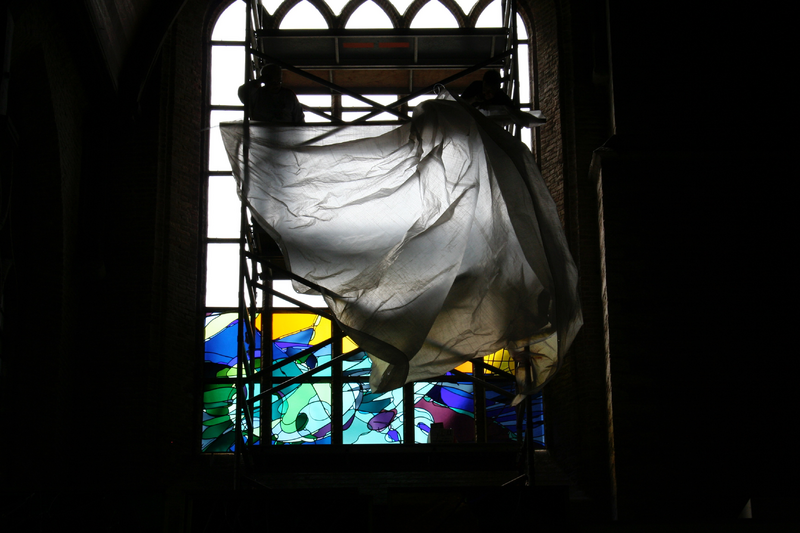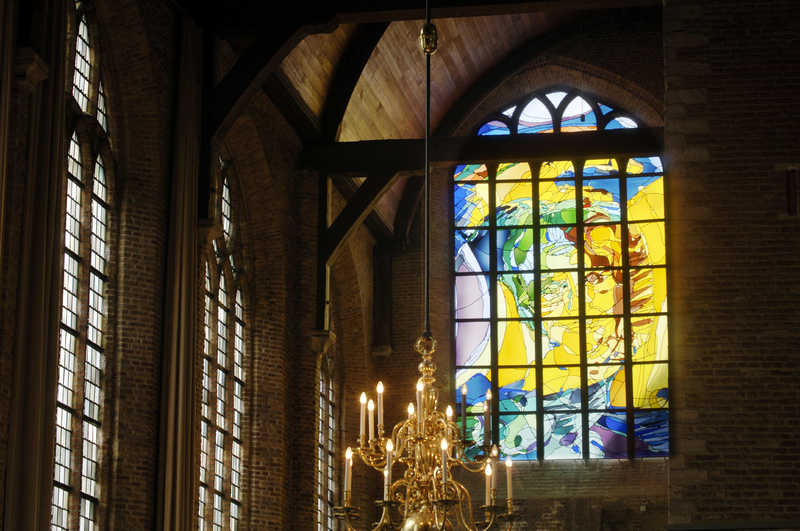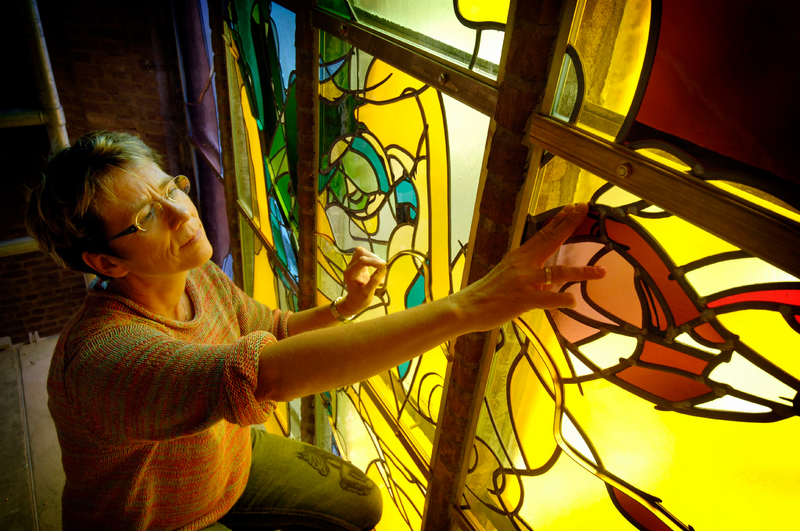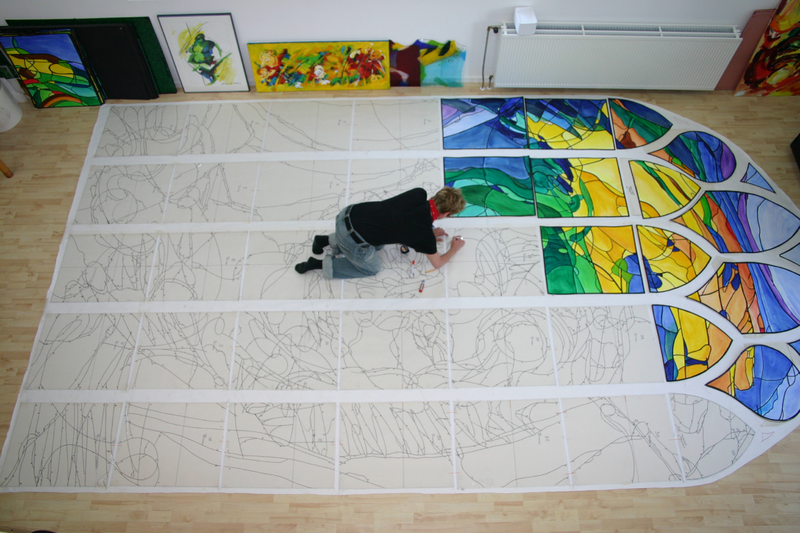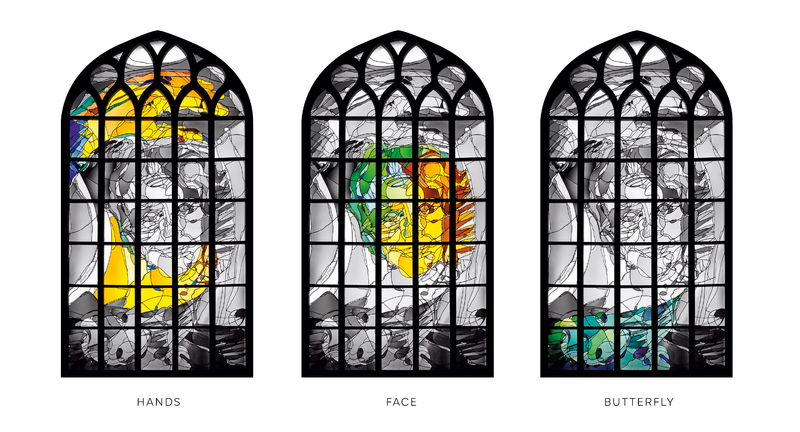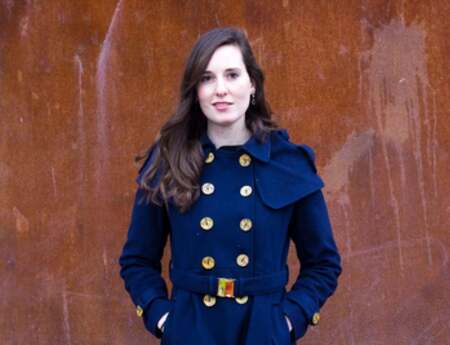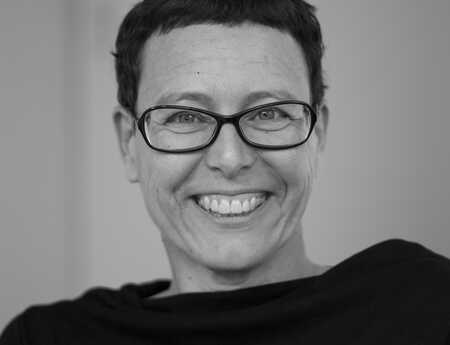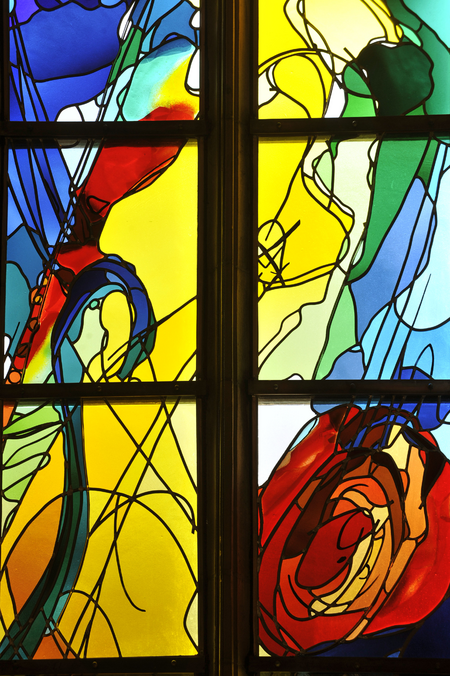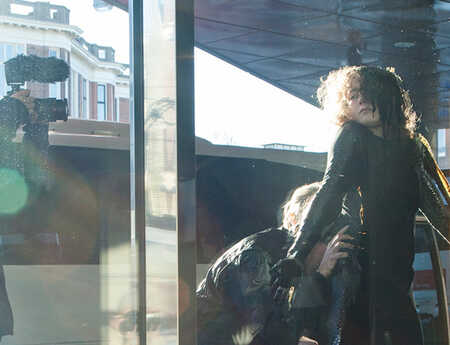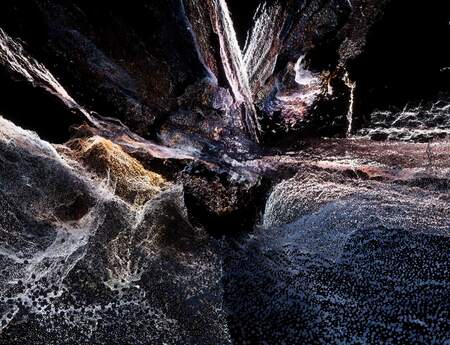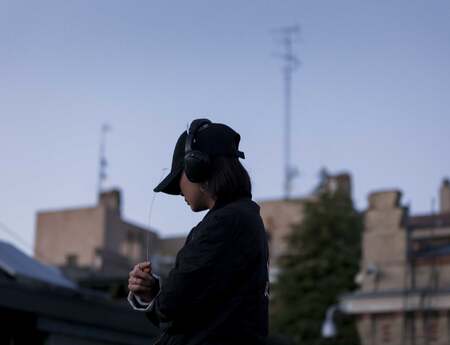The Art of Annemiek Punt: Two Abstract Stained Glass Windows in Different Churches
Stained glass windows first came into prominence during medieval times in churches, but this art form still plays a prominent role in religious spaces. Dutch visual artist Annemiek Punt (Hengelo, 1959) created many abstract-expressionist glassworks for churches and other spiritual spaces during her almost 45 year long career. Two of her most prominent stained glass windows can be viewed in two very distinctly different churches in The Netherlands.
The Nieuwe Kerk (1381) in Delft in the Province of South Holland is reformed and contains the crypts of the House of Orange-Nassau and the Christoffel Cathedral (1410) holds the seat of the diocese Roermond in the Dutch Province Limburg. These two important religious spaces perfectly illustrate how the origin of the Netherlands was created through religious strife in the 16th-century: above the river Rhine most of the country chose the new faith and below the river people remained catholic.
This is reflected in the interior of the churches. The Nieuwe Kerk in Delft, apart from the lavish mausoleum for William of Orange, is sober in its decorations with white plastered walls and columns and the tombstones marked on the stone floor. The contrast couldn’t be greater when entering the Christoffel Cathedral in Roermond. The scent of incense greets you, Gregorian chanting fills the space, and the church is filled with ecclesiastical treasures, from a Renaissance altar to relics.
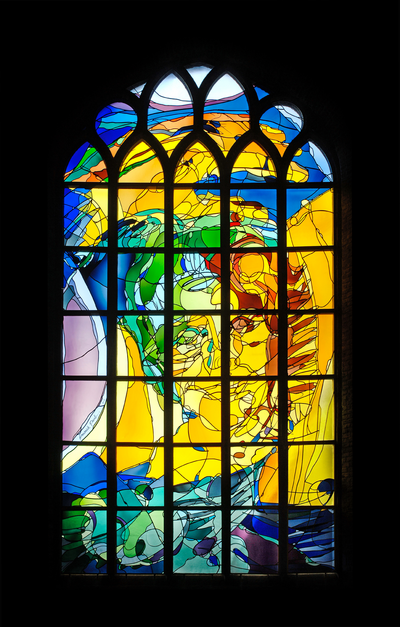
Abstracted Tranquillity
The window Punt made for the Nieuwe Kerk in Delft in 2006 can be seen as her masterpiece. This 3.5 by 7.5 meter window is her interpretation of the biblical story of the raising of Jairus’ daughter. This story has different versions, but in essence it is about Jesus saving and healing a dying child or even bringing a dead girl back to life. Annemiek’s design was chosen from a contest in which she was the only female participant. Apparently, something internal to her design spoke to the church commission even though each member had a different interpretation of her abstracted work.
In Punt’s window the lines swirl around with which she aims to break the perpendicular lines we associate with stained glass windows. In the middle of the window the face of a child can be distinguished in bright yellow, green and red colours. It is enclosed by two enormous yellow hands, and framed by cool colours such a blue, green and purple. Punt was inspired for her work by an old photograph of her son that was lying on the table just when a sunbeam shone on it.
However, to understand the work of Annemiek Punt it isn’t necessary to know this background information, or even identify the forms and symbols enclosed in the work. The forms, lines and colours speak for themselves. Punt creates a circular movement in her work, giving a feeling of security to the viewer, recognisable from when you were little and being comforted by your parents. It also reminds us of the vulnerability of a small child you hold in your hands. This warmth is reflected in the location of the window on the West side of the church, which gives the work of art a warm glow when the sun goes down. The window adds empathy and humanity to the cold stately environment of the almost empty church.
The Force of the Abstraction
A year later she was asked to make a window for the Christoffel Cathedral by the architect Piet Mertens, who was charmed by her work in the Nieuwe Kerk in Delft. In her abstract window in the baptistery, the only direct meaning you can derive is found in the lower left corner. Next to the artist's signature is the name "Thomas More," a reference to the English lawyer, judge, statesman, philosopher, and humanist. The choice for this subject was made by a former judge, who, as an anonymous donor, made the execution of this window possible and provided the life story of the patron saint of statesmen and politicians as inspiration.
It is not the usual representation of a saint, such as John the Baptist, Mary, or Christ. Punt's window reflects More's turbulent life. Thomas More (1478-1535) became famous for his book "Utopia" (1516), in which he describes his ideal society, where the public interest is placed above self-interest. However, he also lived in a turbulent period marked by religious strife between Catholics and Protestants and King Henry VIII's choice to divorce his wife Catherine of Aragon to marry Anne Boleyn. This ultimately led to the separation of the Anglican Church from Roman Catholicism. When the Catholic More refused to acknowledge his monarch as the head of the church, he was sentenced to death and beheaded.
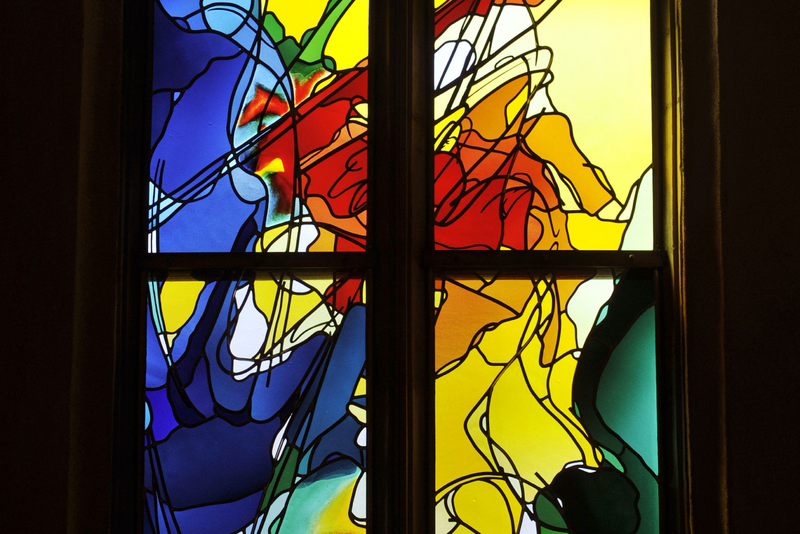
If you let your eyes glide over the window, you are not granted a moment of rest. The tangle of lines is overwhelming. Yellow dominates and fills the central area of the window with occasional bursts of red, seemingly displacing the cool green and blue. In the colours, you can see the religious strife. Red is, of course, the colour of passion for the Catholic faith but also symbolises the blood of Christ and More shed for the faith. By choosing abstraction, Annemiek allows the viewer to interpret the work themselves. We do not see a heroic saint here, which is fitting because More is a controversial person. In his idealistic "Utopia," he advocated for religious freedom, but as Chancellor of Henry VIII, he prosecuted and tortured Protestants for heresy and condemned them to the stake.
This tension is visible in Punt's window, where lines crisscross and colours stand in stark contrast to each other. The only anchor your eyes are given is the powerful upward diagonal lines from the lower left corner to the upper right corner. Only when you let your gaze rise do the lines run parallel, and the colours become light and bright. Punt again has created a window in tune with the glorified environment, while it questions the portrayed heroism at the same time.
So, both artworks correspond with their setting, but challenge them. All the while the artist stays true to her characteristic abstract-expressionist style in which the subject is secondary to the form and shape of the work. To be able to develop these shapes she is one of the few artists who is able to blend the techniques of stained glass windows with glass fusion. Ultimately it is with glass and light that she conveys her emotions and adds new spirit to these centuries old religious spaces.
This article has been adjusted for Sculpture Network and will partly appear in the book about Annemiek Punt that will be published in 2024.
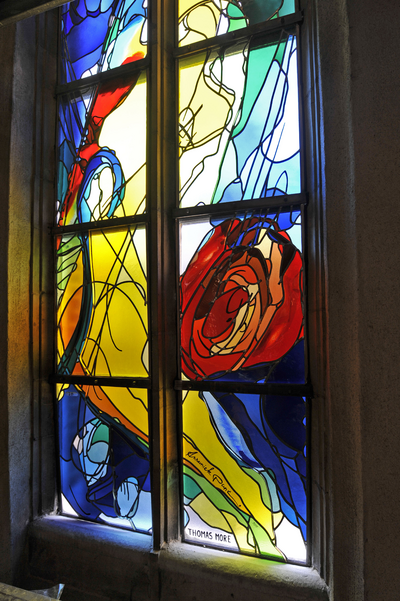
Verfasserin: Sietske Roorda

